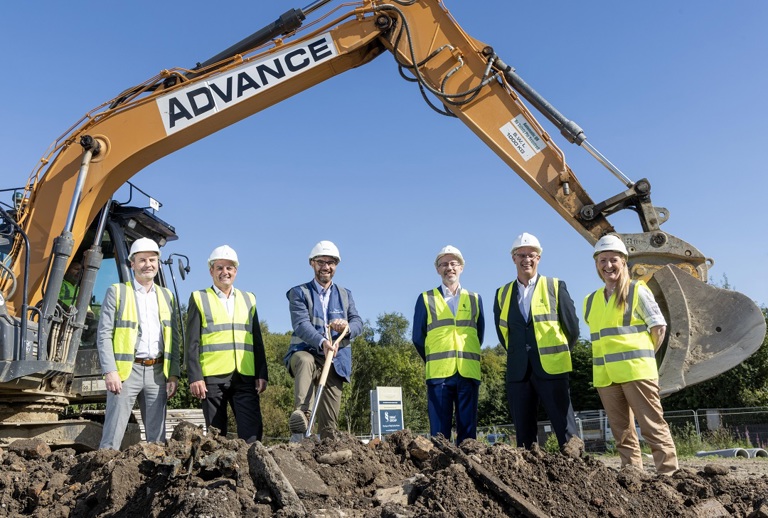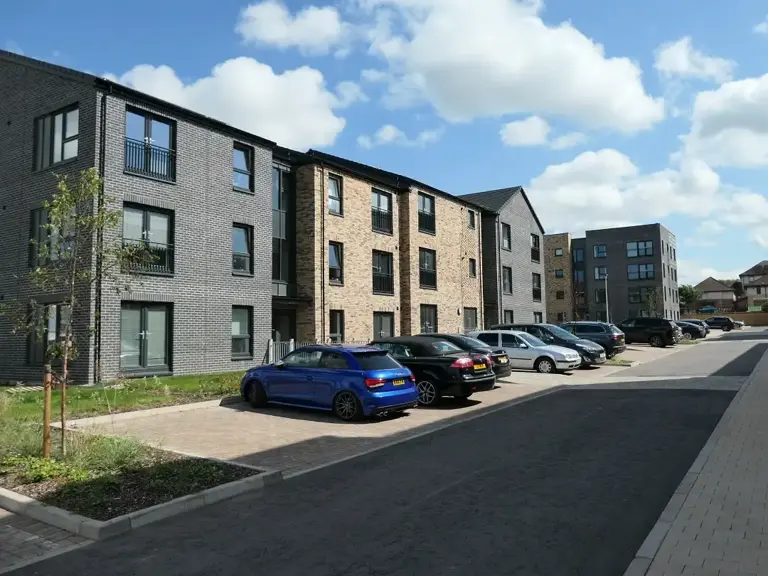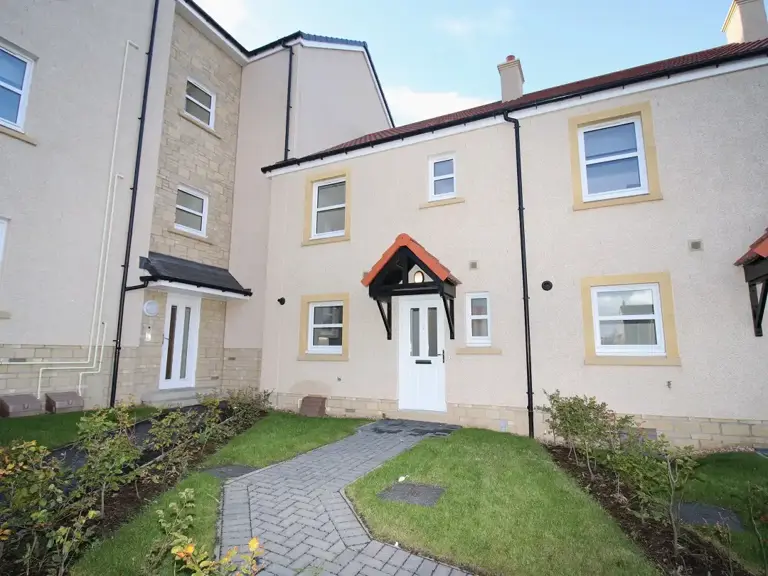Housing for Keyworkers - Rental
Written by William Kyle, New Avenue Living Fund Director and Cath Webster, Chief Executive Officer.
July 2024
In this article:
One of the first residents in Thriving Investments’ latest Edinburgh development to come onstream were a young couple, not long married, dual income but struggling to find a home convenient for work that they could afford in an Edinburgh rental market that is overheated and undersupplied. Others included medical staff at the nearby Edinburgh Royal Infirmary, a 5-minute cycle or 20-minute walk from the development. All would have been spending considerably more of their monthly income to secure a home in the private rented sector without the security of tenure that comes with a professional corporate landlord, backed by long-term, patient capital. Professional landlords are interested in not only the stable returns available from this asset class but also the social impact factor of contributing to the long-term availability of affordable homes throughout the UK.
Discount Market Rent (DMR) or Mid-Market Rental (MMR¹) housing (the latter a Scottish tenure) - generically termed by us as "keyworker rental housing” - has become an increasingly important part of the housing landscape across the UK over the past decade. With rising housing costs and limited availability of affordable homes to buy or rent and increasingly long housing lists for social housing, keyworker rental housing helps bridge the gap by providing quality housing at below market rate rents to an important, and often under served, sector of the population. Thriving Investments acquires for and manages the New Avenue Living MMR fund delivering over 1,100 discounted rental homes in Scotland. New Avenue Living’s MMR rents in Scotland (as at mid 2024) range between 48% and 71% of the average open market rents in the area in which they operate.
As Thriving Investments looks to grow its offering in Scotland and broaden the geography of its affordable / key-worker fund model throughout the UK, it is worth reviewing the important role that this tenure of housing can play in the delivery of more homes and the benefits to customers, cities and the wider economy.

Access to quality affordable housing
The primary benefit of keyworker rental housing is increasing access to high-quality, professionally managed housing for those who do not qualify for social housing but still struggle to afford market rents or home ownership. Keyworker housing rents are lower than market rents and for MMR in Scotland set by reference to a BRMA² benchmark which generally sits at or slightly ahead of the LHA (Local Housing Allowance) rate. Elsewhere there can be a reference to a percentage of open market rent or a policy such as London Living Rent which defines the monthly cost. The principle is to make rents affordable for moderate and middle-income households like teachers, police officers, healthcare workers, and young professionals. With long waiting lists for social housing in many cities keyworker housing fills a critical need. These homes provide the space, amenities and neighbourhood quality found in open market housing while remaining reasonably priced. Building to a high EPC level and including sustainable energy solutions where possible also ensures that the homes are cheaper to run than traditional older housing stock, typically found in the private rented sector, and further helps with affordability, especially in a cost of living crisis and/ or when energy prices are elevated to ensure that total occupancy costs remain affordable.
The majority of MMR customers in Scotland³, 67%, are in the 25-44 year-old range with most being couples. Occupations vary from office staff, factory workers, catering and trades to a high number of medical, teaching and care staff. All benefit from homes a short journey from their employment and many have family connections in the area of our homes but were previously unable to find suitable homes for themselves. In our Mid-Market rent customer opinion survey customers told us that Location, Price and Peace of Mind where the three main reason they choose to rent with us.
Supporting Key Workers and Economic Growth
By expanding the range of high-quality affordable homes, keyworker housing tenures help attract and retain talented workers across various industries and occupations. Nurses, teachers, technicians, police officers and other critical roles that support community health and growth and are vital to city economies often have middle incomes that make market rents stretch their budgets too thin⁴.
Keyworker rental housing allows workers to live affordably near their places of employment without excessive commuting time or cost. This promotes recruitment and retention, benefitting essential public services. It also helps companies fill skilled positions vital for economic development. Reducing commuting reduces congestion and carbon emissions in urban areas. A recent research study undertaken by Thriving Investments and Dataloft / Price Hubble highlights the lack of affordability across the UK for this key demographic⁵.

Increased Housing Mobility and Choice
Housing provision aimed at keyworkers increases choice and mobility within the rental market. It provides affordable options in more neighbourhoods, including those with limited social housing. This gives renters access to areas with good schools, transport and jobs. More choice and mobility make it easier for households to move for new opportunities. Overall, rentals enable a more balanced social mix within communities and can play a significant role in large mixed tenure regeneration plans. Thriving Investments homes typically comprise low-rise apartments and smaller family homes, reflecting the needs of their target customers.
Freeing Up Social Housing
By serving the affordable / key-worker demographic, mid-market rent homes can ease the pressure on scarce social housing resources. When teachers, nurses and skilled technicians can access affordable mid-market homes, it opens up more social housing for lower-income families in greatest need.

Long-Term Housing Stability
For tenants, keyworker rental housing owned by patient capital offers long-term rental security compared to private rentals. Landlords provide more predictable rents and, with a long-term institutional timeline, stable tenancies, allowing families to plan budgets, settle children into schools and create a thriving community for the new development. The long-term security and affordability enable greater resident participation in communities, volunteering and local decision making. Stable, satisfied tenants in turn make for more vibrant places to live. This is echoed in the response to our customer opinion survey where over 73% of respondents said they intended to stay in their current Mid-Market rent home for longer than two years.
New Housing Supply and Urban Regeneration
Discount market / Mid-market rentals are an increasingly popular model for developing new affordable housing supply, adding to inventory with lower levels of public subsidy. These projects often target underdeveloped urban sites, bringing brownfield regeneration benefits and with a forward fund or forward commit contract can bring considerable cash flow benefits to developers removing sales risk and kick-starting larger projects. Investors are drawn by the stable long-term returns from affordable rents and the relatively granular but also steady income stream to diversify from commercial real estate. This leverages in private investment to grow affordable housing and revitalise communities while minimising public expenditure.

Pathway to Homeownership
Keyworker rental housing may also open a pathway to future homeownership for tenants. The rental saving compared to open market combined with security of tenure allow households to settle, budget and save for deposits with a greater level of certainty. Affordable rentals help develop savings, budgeting skills and secure employment needed for successful homeownership. In turn, vacated midmarket homes create new affordable opportunities for other renters.
Overall, the growth of quality keyworker rental housing can deliver multiple benefits for communities and families throughout the UK as Thriving Investments’ “New Avenue Living Fund” has done across Scotland and is now seeking to do in other parts of the UK. More affordable rents, housing mobility, vibrant neighbourhoods, key worker accommodation and urban renewal all flow from the development of mid-market homes. As the demand for affordable housing persists, supporting the continued development of this flexible tenure will be key for both national and local government and the property development sector.
Institutional investment
The institutional Build to Rent market for homes has grown from nothing a decade or so ago to be the recipient of £4.3billion of investment in 2023⁶ with investors attracted by the good quality, professionally managed rental homes. Keyworker housing delivers the same quality product and customer focus alongside a diversified income stream with inflationary links much like the open market rental homes, albeit set at a discount. The discounted rent and security of tenure in turn delivers clear social value to the local market allowing customers to settle in their communities for the longer term.
In line with Thriving Investments’ Guiding Principles we prioritise creating and sustaining thriving communities and providing additional support around health and wellbeing, cost of living advice and digital inclusion. Thriving Investments, through its New Avenue Living Mid-Market Rent Fund, is delivering and managing for the long-term 1100+ new homes (based on current funding) with the potential to grow further in Scotland. With the evident success of the Scottish model in terms of financial returns and social value being delivered, Thriving Investments is engaging with other regions of the UK to replicate the structure and continue to deliver housing at affordable rents.
Sources:
- 5. The role of mid-market rent in the concept of affordability - Rent affordability in the affordable housing sector: literature review - gov.scot (www.gov.scot)
- BRMA is Broad Rental Market Area. There are 18 in total in Scotland covering the main city regions and geographical areas. Rents are set by reference the 30th percentile market rent in the relevant BRMA which broadly align with the LHA (Local Housing Allowance) rate.
- New Avenue Living - Economic & Social Impact Assessment
- Keyworker has traditionally been defined as key public sector workers eg police, teachers, NHS etc, the GLA defines it wider as those occupations that are considered essential to the functioning of a city, or where there is a requirement for an employee to be anchored at their workplace to carry out their role alongside an income cap (see GLA Housing Policy Practice Note - Allocating Intermediate Homes to London's Key Workers). We
generically believe that this can be as simple as those on median to lower quartile incomes. - Dataloft report
- Source 2023 Build-to-Rent Investment Volumes Surpass 2022 Levels (cbre.co.uk) Socially and environmentally conscious UK fund management | Thriving Investments
News
Latest News
11 December 2025
Delivering sustainable homes and creating impact across our ReSI platform
08 December 2025
Picture Living teams up with Vistry to deliver 60 homes in Cambridgeshire
03 December 2025

